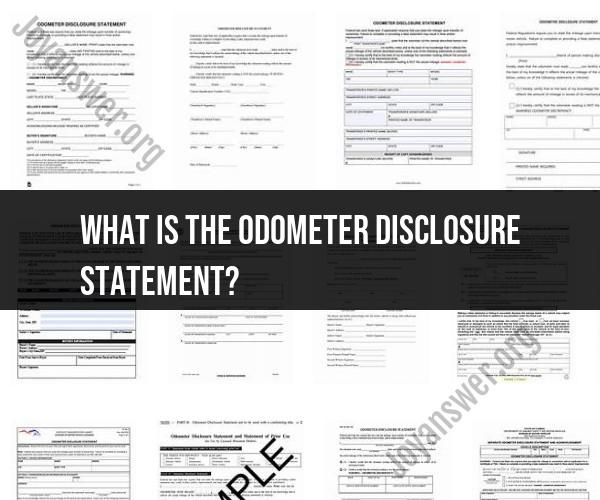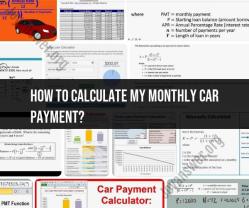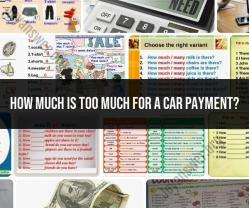What is the odometer disclosure statement?
An Odometer Disclosure Statement (ODS) is a legal document used in the sale or transfer of a motor vehicle to disclose the vehicle's mileage or odometer reading to the buyer or transferee. The purpose of the Odometer Disclosure Statement is to prevent odometer fraud, which occurs when the mileage on a vehicle is misrepresented to inflate its value. Odometer fraud is illegal and can result in serious legal consequences.
Key points about the Odometer Disclosure Statement:
Mandatory Requirement: In the United States, the Odometer Disclosure Statement is a mandatory document for most vehicle sales or transfers. Federal law, specifically the federal Odometer Act, governs the use of this statement.
When It's Required: The ODS is typically required for the sale or transfer of motor vehicles that are less than 10 years old. It is not usually required for vehicles that are 10 years old or older due to their exempt status.
Information Included: The Odometer Disclosure Statement includes essential information, such as the vehicle's make, model, year, vehicle identification number (VIN), the seller's and buyer's names and addresses, and the vehicle's current mileage or odometer reading.
Signature Requirement: Both the seller (transferor) and the buyer (transferee) must sign the Odometer Disclosure Statement. Their signatures indicate that they acknowledge the accuracy of the mileage reading.
Federal and State Forms: Odometer Disclosure Statements can take various forms depending on your location. Some states have their own specific forms, while others use the federal Odometer Disclosure Statement form provided by the U.S. Department of Transportation.
Record Keeping: Copies of the Odometer Disclosure Statement should be kept by both the seller and the buyer as a record of the transaction. It may also be submitted to the appropriate state agency responsible for motor vehicle registration.
Title Transfer: In many states, the Odometer Disclosure Statement is typically included as part of the vehicle's title transfer process. It must be completed accurately for the transfer of ownership to be valid.
It's crucial to provide accurate information on the Odometer Disclosure Statement, as any misrepresentation of mileage can result in legal consequences, including fines and penalties. Additionally, odometer fraud can lead to significant financial losses for buyers.
When buying or selling a vehicle, it's a good practice to verify the mileage and carefully complete the Odometer Disclosure Statement to protect both parties involved in the transaction and ensure compliance with applicable laws and regulations. Be sure to check your specific state's requirements and forms, as they can vary.
Odometer Disclosure Statement: What You Need to Know
An odometer disclosure statement is a legal document that discloses the mileage of a vehicle when it is sold or transferred. It is required by law in all 50 states and the District of Columbia. The statement must be signed by both the seller and the buyer.
Car Buying and Selling: Understanding the Odometer Disclosure Statement
When buying a car, it is important to get a copy of the odometer disclosure statement. This will help you to ensure that the seller is not tampering with the mileage. The statement should include the following information:
- The make, model, and year of the vehicle
- The vehicle identification number (VIN)
- The mileage
- The date of the sale
- The signatures of both the seller and the buyer
If the seller is unable to provide you with an odometer disclosure statement, be wary of buying the car. It is possible that the seller is tampering with the mileage.
Accurate Mileage Reporting: The Role of the Odometer Disclosure Statement
Accurate mileage reporting is important for a number of reasons. First, it helps to protect consumers from fraud. Second, it helps to ensure that vehicles are properly maintained. Third, it helps to prevent mileage rollback, which is a type of fraud in which the mileage of a vehicle is altered to make it appear less used.
The odometer disclosure statement plays an important role in ensuring accurate mileage reporting. By requiring sellers to disclose the mileage of their vehicles, the odometer disclosure statement helps to protect consumers and to prevent mileage rollback.
Here are some additional tips for buying a car and understanding the odometer disclosure statement:
- Get a copy of the odometer disclosure statement from the seller before you sign any paperwork.
- Inspect the statement carefully to make sure that it is accurate and complete.
- If you have any questions about the statement, ask the seller or a trusted mechanic for help.
- Be wary of buying a car from a seller who is unable to provide you with an odometer disclosure statement.
By following these tips, you can help to protect yourself from odometer fraud and ensure that you are getting an accurate reading of the mileage of the car you are buying.













